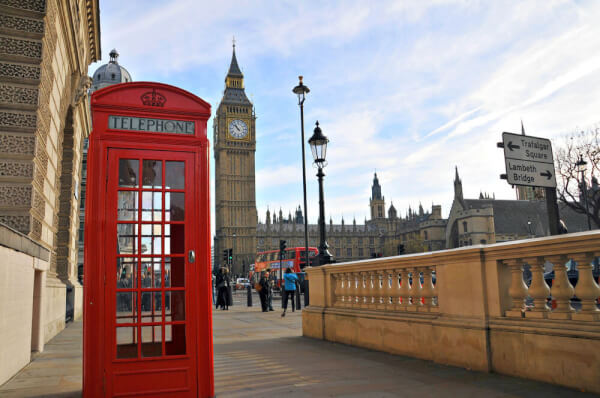Top 7 property management software systems in the UK
Get a full overview of the best property management software systems in the UK that will help you easily track and manage your overseas property.

Having a separated family can be a stressful situation. When there are kids involved, it’s even more so. In the UK, parents are required by law to provide for their children financially no matter the living arrangement. Especially when one of the parents lives in another country, it can get tricky to navigate. But there are a lots of different options for how paying child maintenance (called child support in some countries) can look. The agency responsible for handling these matters is called the Child Maintenance Service (CMS), though until recently it was known as the CSA (Child Support Agency).
Regardless of whether you’re just treading into these waters or you’ve had an arrangement for awhile and have more questions, read on for a guide on what you need to know about child maintenance in the UK.
Child maintenance, called child support by some, is regular, reliable financial support that helps cover a child’s everyday living costs. Those costs include food and clothing as well as a suitable place to live. It’s generally money that the parent without main day-to-day care of the child pays to the parents who does have main day-to-day care of the child. However, families are free to create their own child maintenance agreements that can include buying items the child needs directly rather than sending money.
Child maintenance can be paid by either parent, or even both parents if another relative or guardian provides main day-to-day care for the child.
Under UK law, a person might be responsible for child maintenance if they:
Child maintenance can be used for anything that provides for the child, including (but not limited to) food, housing and clothing. If you’re a child maintenance recipient, it might be a good idea to keep records of how you spend your child maintenance payments in case a dispute ever arises.
In the UK, it’s presumed, at least at the beginning, that parents will make decisions together about education, medical matters, etc for the child. A parent with day-to-day care (previously called ‘residence’) is essentially equivalent to what many other countries call custody.
Child maintenance is paid to the parent or guardian with main day-to-day care by the parent(s) without day-to-day care. It can be paid to someone who isn’t a parent if the person providing main day-to-day care for the child is someone like another relative or a guardian.
In the UK, there are several options for arranging child maintenance.
More on all of these options as well as a more detailed outline of the costs involved in the section on the best way of setting up payments.
The amount a paying parent will be asked to pay is determined based on a few factors:
| Number of children | Rate (percent of weekly gross income) |
|---|---|
| 1 kid | 12% |
| 2 kids | 16% |
| 3 or more | 19% |
However, due to the number of factors involved, you should get an estimate for your specific situation. The UK government provides a child maintenance calculator online.
In the UK, you have some freedom to decide this for yourself. In a family-based arrangement, both parents decide how much will be paid and how it will be paid. If the CMS has provided a rate, there are still a few options.
As mentioned previously, there are a number of ways you can set up your child maintenance payments - Family-based arrangement, Direct pay, Collect and Pay, or via court arrangement.
With both Family-based arrangements and Direct Pay, the arrangement for payments are set up between the parents. With Collect and Pay, CMS will directly take the money from the payer and give it to the receiver. Court orders will be set up individually, but will generally be enforced by local governments depending on the country where the payer lives.
Ultimately, though, if you’re sending money from abroad, it can be a bit trickier. To cut down on the amount taken from the child maintenance, you’ll likely want to use a service like Wise to make sure your child doesn’t lose out on all of the international banking fees that come with sending money abroad through a normal bank.
The paying parent is normally expected to pay child maintenance up until the child turns 16, or 20 if they’re still in school or college doing A-levels, highers or something equivalent. There are some cases when it may stop earlier, for example, if one parent dies.
If your circumstances change and you think you should be able to start paying less child maintenance, you’ll have to contact the CMS office that manages your case. They’ll take down your information and tell you whether you qualify to reduce your child maintenance rate.
Another option is joint residency, or increasing the amount of time the paying parent spends providing day-to-day care for the child. Based on the UK’s most recent child maintenance scheme, paying parents can reduce their child maintenance up to 50%:
| Number of nights of with the paying parent each year (shared care bands) | Cut to child maintenance (for each child with shared care) |
|---|---|
| 52 - 103 nights | 1/7th |
| 104 - 155 nights | 2/7ths |
| 156 - 174 nights | 3/7ths |
| 175 nights or more | ½ (50%) plus an extra £7 a weekcut for each child in this band |
Child maintenance payments aren’t eligible for tax relief in the UK. On the other hand, though, child maintenance received doesn’t count as taxable income, so that may be helpful.
The UK offers several ways to set up a child maintenance arrangement.
For example:
Family-based arrangements don’t involve fees at all as they’re set up privately. If it works for your situation, the simplest and most cost-effective way to set up a child maintenance arrangement in the UK is through a family-based arrangement. This means both parents are in agreement over who pays and how much. They can make payments directly without paying any fees to do so.
However, family-based arrangements aren’t automatically legally binding, so if there’s a dispute, there’s no guarantee that child maintenance gets paid. You can make the arrangement legally binding later with a consent or court order (in Scotland it’s called a ‘Minute of Agreement’). Of course, if you do have to go to court, this will come with a solicitor and court costs. But if the parent responsible for paying stops at any point, the receiver will be able to have the court enforce the payments.
If you do make arrangements through CMS, they’ll collect applicable information, such as both parents’ incomes and the amount of time the child spends in the day-to-day care of each parent, and set a rate.
There‘s a £20 fee when you apply as well as possible additional fees to use the CMS, though this is waived if you’re in Northern Ireland, under 19, or a victim of domestic violence. After the rate is set, the parents can choose whether they want to set up an arrangement amongst themselves, or if CMS is needed to collect the payment each month.
These two options are called:
After CMS calculates the amount that the parent without day-to-day care needs to pay, the parents will then arrange how and when payments are made themselves. CMS won’t enforce nor monitor payments.
However, if at any point the paying parent stops paying or pays less than agreed, there’s an option to move to the Collect and Pay option - which comes at a much higher cost.
If you choose the option to Collect and Pay, CMS will enforce the collection in whatever manner they choose. CMS will collect the payment from the paying parent and send it to the parent with day-to-day care. However, the cost for this is steep and it’s a good idea to avoid it if at all possible. As a charge, the one receiving the child maintenance must pay 4% of the amount to CMS, and the one paying must pay 20%. That’s money that could have gone to the child.
There are a few instances in which child maintenance arrangements can be made directly through the courts. This more likely happens if there are extenuating circumstances and the parents cannot agree on payments such as additional school tuition that needs to be paid, if the child has a disability, if one or both of the parents has a high level of income (generally more than £156,000 per year), or if the paying parent lives abroad. If you do end up having to set up a court-ordered arrangement, you’ll likely need to take into account lawyer/solicitor fees as well as court costs. Not to mention the time you may need to take off work to arrange this.
If the paying parent lives abroad and no family-based arrangement has been made, there’s a slim chance you can still set up payments through CMS. But only under a handful of circumstances.
Otherwise, if the parents cannot come to an agreement amongst themselves, an arrangement can be made through the courts. This will involve court fees that will vary. Either the parents can agree on who will pay court costs, or the court can decide in a disputed case.
If you’re living abroad and need to pay child maintenance payments, you’ll probably want to use a money transfer service rather than your bank. Banks and normal money transfer services routinely mark up the exchange rate 4-5% meaning your transfer costs you - and your child - more than you realize.
Instead, you can transfer money directly to a bank account abroad with Wise. Wise gives the real exchange rate — the one you find on Google. Because Wise has local bank accounts all over the world, those expensive international bank fees are completely cut out. Which means Wise charges just a small, fair transfer fee that’s spelled out upfront. For those who frequently travel internationally, Wise also offers borderless multi-currency accounts, which allow users to send, receive and manage money in multiple global currencies all at once — great if you frequently send money across borders. And for no monthly fee.
If one of the parents lives abroad, over 100 countries, including Australia and those that live within the European Union, have agreements in place such that local courts may be able to enforce child maintenance payments to the UK from parents living abroad. This is called a Reciprocal Enforcement of Maintenance Orders (REMO) agreement.
If the paying parent lives outside of the UK and refuses to pay, whether he or she can be forced to pay is dependent upon the country he or she lives in. Some options are to contact the CMS, the government of the country where the paying parent lives, or a divorce or family law attorney to learn your options.
Child maintenance can be a tricky and emotionally fraught subject to navigate, but hopefully, armed with this information, you should be able to get the best financial outcome for your child. Good luck!
*Please see terms of use and product availability for your region or visit Wise fees and pricing for the most up to date pricing and fee information.
This publication is provided for general information purposes and does not constitute legal, tax or other professional advice from Wise Payments Limited or its subsidiaries and its affiliates, and it is not intended as a substitute for obtaining advice from a financial advisor or any other professional.
We make no representations, warranties or guarantees, whether expressed or implied, that the content in the publication is accurate, complete or up to date.

Get a full overview of the best property management software systems in the UK that will help you easily track and manage your overseas property.

Are you looking for the best Airbnb management companies in London? Find out all about the top local providers to take care of your rental property overseas.

Interested in buying land in Scotland? Here’s everything you need to know about buying a plot of land abroad as an American.

If you’re considering moving to the UK, then you’ll want to read this moving to UK guide first! Find all you need to know about moving to the UK.

Everyone needs to call home every now and then. To find out how to call UK from US, take a look at this article – we'll show you all tips & area codes you need!

Are you pregnant? Congratulations - this is one of the most exciting periods of your life. But if you’re living abroad as an expat, visitor, or non-resident...